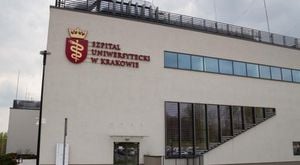A child has scratched a painting by the renowned American artist Mark Rothko, valued at up to 50 million euros, during a visit to the Museum Boijmans Van Beuningen in Rotterdam. The incident occurred on April 25, 2025, when the child was briefly unsupervised in a depot where the artwork, titled "Grey, Orange on Maroon, No. 8," was being displayed as part of an exhibition featuring the collection's seventy most popular pieces.
The museum confirmed that the damage, described as "superficial scratches" on the unvarnished layer of paint, is likely repairable. A spokesperson from the museum stated, "We expect that we will be able to show the painting again in the future." The scratches are located at the lower part of the painting, where the canvas is stretched around the frame. Experts are currently assessing the situation to determine the best course of action for restoration.
Mark Rothko, who lived from 1903 to 1970, is celebrated for his contributions to Color Field painting, characterized by large canvases filled with luminous colors that evoke emotional responses. His works are known for their meditative quality, often leaving viewers deeply moved. In fact, during a 2021 exhibition at the museum, visitors were allowed to spend ten minutes alone with the artwork in a sealed room, leading some to tears.
The museum's main building is currently closed for renovations, which are expected to last until at least 2030. This incident adds to a history of challenges the museum has faced regarding damage to artworks. In 2011, a similar mishap occurred when visitors accidentally spilled peanut butter on the floor, leading the museum to hold those responsible accountable for the cleanup costs.
As for the current situation, the museum has not disclosed who will bear the financial responsibility for the restoration of Rothko's painting. Typically, museums hold visitors financially liable for damages or seek compensation through their insurance. While the identity of the child and their parents is known to the museum, no further details have been released.
Experts in art restoration have expressed concerns about the complexity of repairing Rothko's work. Jonny Helm, a marketing manager at the art restoration service Plowden & Smith, mentioned that the mix of pigments, resins, and adhesives used in modern unvarnished paintings makes restoration particularly challenging. "In this case, scratching the upper layers can significantly affect the viewing experience of the work," Helm elaborated.
The museum is working closely with restoration experts both locally and internationally to explore the next steps in treating the damaged painting. As the investigation continues, the museum remains hopeful that Rothko's artwork will once again be on display for the public to appreciate.
This incident raises broader questions about the safety of artworks in public spaces, especially in environments where children are present. Art institutions are often tasked with balancing accessibility to the public while ensuring the protection of priceless works. The museum's approach to this incident will likely influence future policies regarding visitor interactions with art.
Rothko's paintings have fetched astronomical prices at auction, with one piece selling for 86.9 million dollars in 2012. His works are not only valuable in monetary terms but also hold significant cultural and historical importance. The loss or damage of such pieces can have lasting repercussions on art institutions and the public's access to these cultural treasures.
As the museum navigates this incident, it serves as a reminder of the delicate relationship between art and the public. While the joy of experiencing art is paramount, the responsibility of preserving these works for future generations is equally crucial. The museum's commitment to restoring Rothko's painting reflects a dedication to both the artist's legacy and the experience of art in contemporary society.
In the wake of this event, museum officials are likely to re-evaluate their policies regarding visitor supervision and interaction with artworks. As art becomes increasingly accessible, institutions must find innovative ways to protect their collections while fostering a love for the arts among young audiences.
The incident at the Museum Boijmans Van Beuningen highlights the ongoing challenges faced by cultural institutions in maintaining the integrity of their collections. As restoration efforts begin, the art community will be watching closely, eager to see how this situation unfolds and what it means for the future of art preservation.





